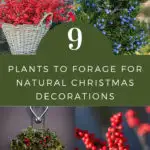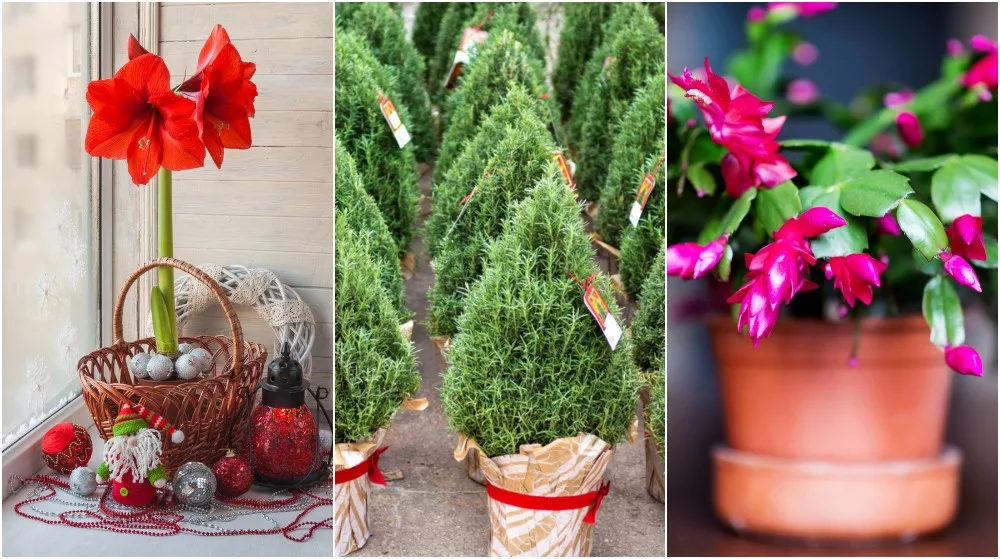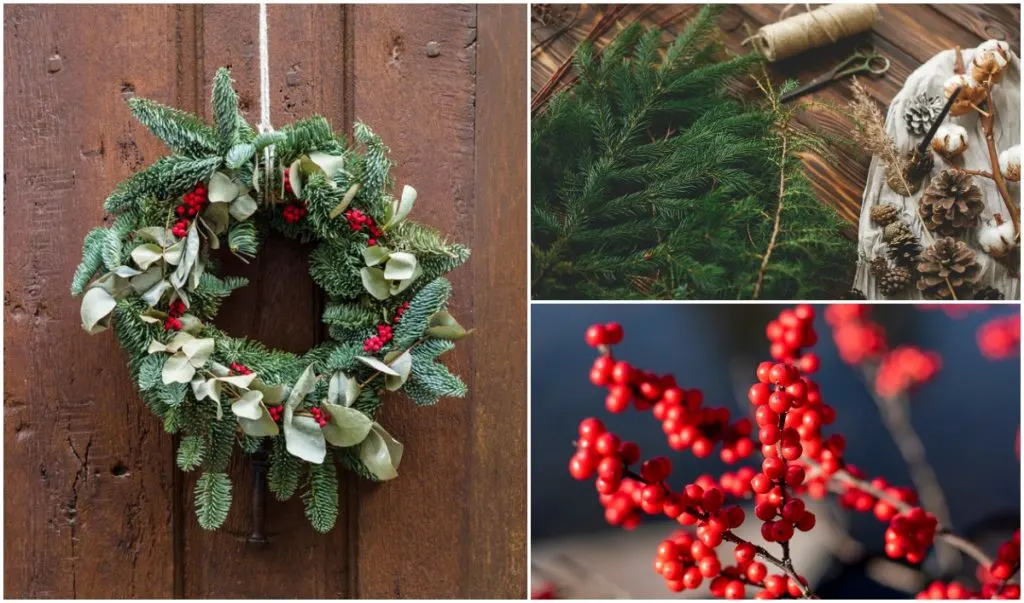
It’s the most wonderful time of the year, or so the song goes. I tend to agree. Christmas and the holiday season are my favorite time of year. I love decorating my home with outdoor Christmas plants and making it festive and welcoming.
For me, using foraged plants has been a part of Christmas decorations for as long as I can remember.
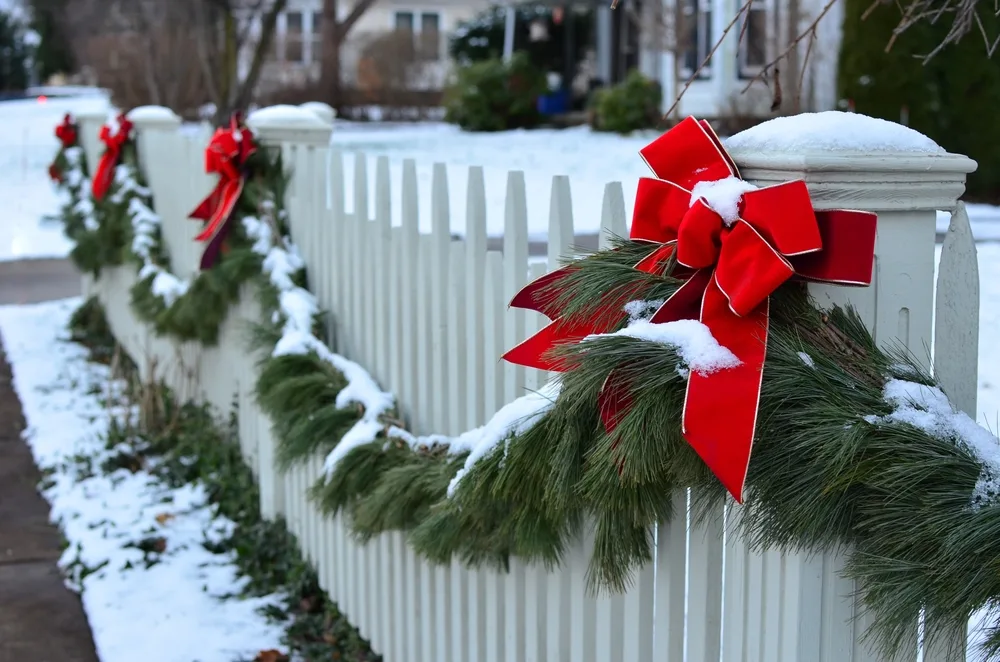
If any of you have read my bio, you’ll know I spent my weekends growing up on my dad’s off-the-grid homestead.
I remember one December, Dad and I put on our snow boots and winter gear, Dad grabbed his saw, and we hiked up into the woods.
It had been snowing all week, and the forest looked like something from a Christmas card. Everything was covered in pillowy mounds of white, green from pines peeked out here and there. And red seemed to pop out in the most unexpected places. A cardinal in the brambles, a tiny spray of wintergreen berries, bright red winterberries; it was beautiful.
Dad said he wanted to show me something, so we hiked up to the heart of our piece of the forest, and there in a clearing was a stand of about a dozen trees. Christmas trees – all balsam fir in a forest filled with eastern white pine. They lined up perfectly in three rows. The trees were filled with noisy chickadees and cardinals. It was so strange and beautiful.
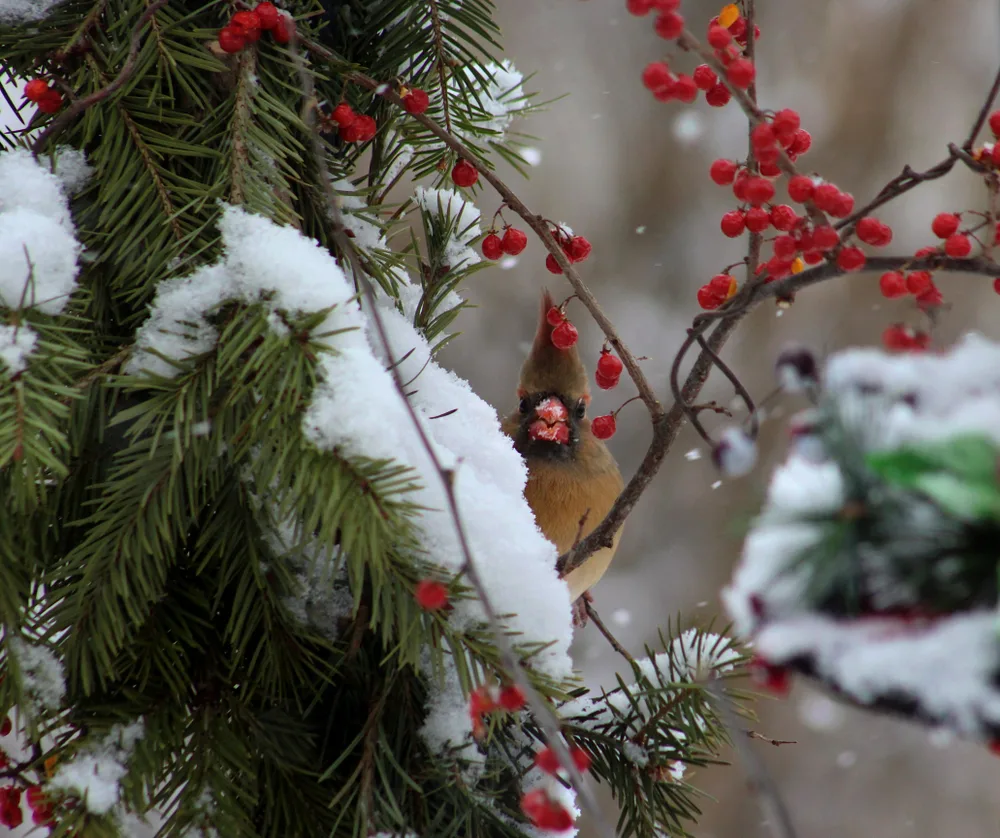
Dad said the only thing he could think to explain it was back when this piece of land had been farmland, someone must have had the idea to plant the trees for themselves.
In the end, we left them right there. That little Christmas tree plot was just too pretty and wild now to touch.
We came home with dad dragging a scrawny and oddly shaped white pine behind him, and me with armfuls of winterberry branches and my pockets loaded with pine cones.
And just like Charlie Brown’s tree, once we decorated our little tree, it was quite beautiful. The log cabin had sprays of evergreen bows, winterberries, and pine cones tucked everywhere I could stuff them. Even without electric Christmas lights, it was gorgeous.
If ever there was a time of year to bring nature indoors, it’s at Christmas. Use these festive outdoor Christmas plants.
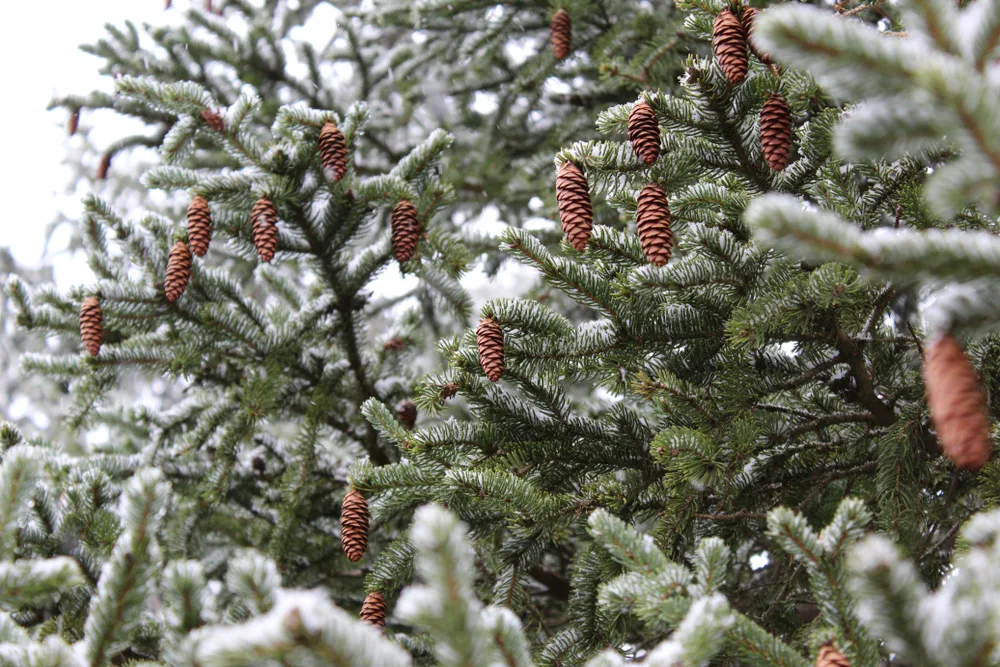
When the days are short and nights are long and dark, it’s nice to be reminded that living things are still growing and thriving. When I was young and broke, gathering natural decorations was one of the only ways I could afford to decorate for Christmas. And these days, while you’d be hard-pressed to make me give up my twinkle lights, I still love bringing outdoor Christmas plants inside for the holidays.
I’ve put together a list of outdoor Christmas plants that can easily be found and used to brighten your home for the coming holidays. You can find many in your backyard or a field or the woods.
1. Evergreens
Not only will boughs of evergreen brighten your holiday home, but they’ll also perfume the air with their wonderful scent. Pine, spruce, fir, cedar, hemlock; you name it, these lovely trees are incredibly easy to find. You probably have one growing in your yard right now. Or keep an eye out on your next hike. It’s easy enough to grab a branch or two for decorating.
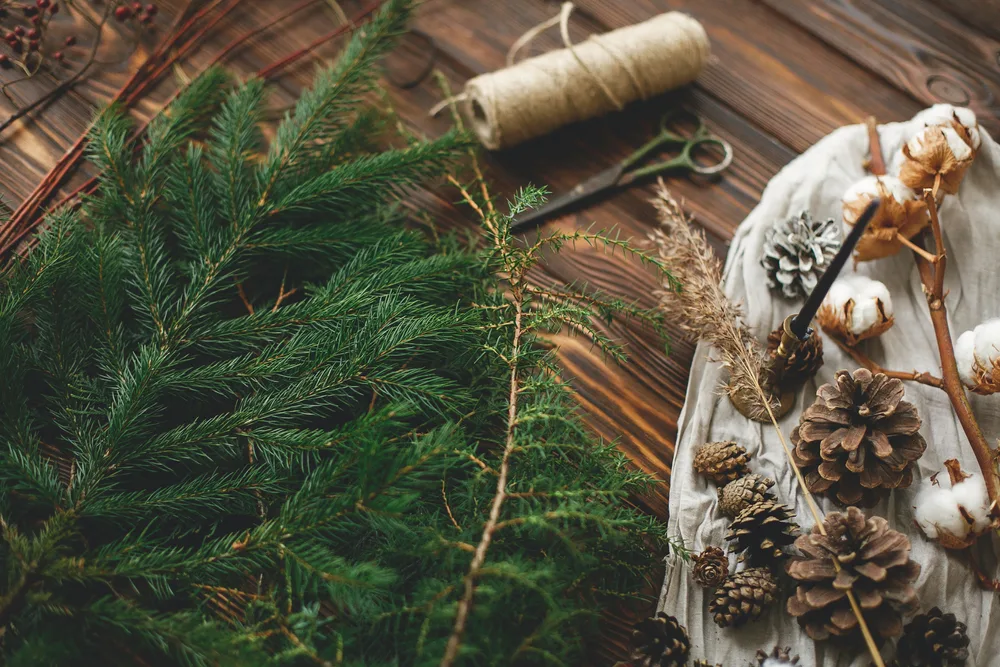
If you purchase a Christmas tree at a cut-your-own Christmas tree farm, always ask for the bottom branches that they trim off. Because most folks aren’t interested in these leftovers, Christmas tree farms usually have giant piles of branches free for the asking. Be sure and grab a few branches from different types of trees for a variety of evergreens to decorate with.
Tuck a sprig of pine here and there. If you have a mantle, layer it with pine boughs, pine cones, and sprigs of holly or rosehips. Put a few pine branches on a bookshelf, above a doorway, or arrange them on your dining room table.
Make a kissing ball, not to be confused with mistletoe. Evergreen kissing balls have been around for centuries. And while they’re pretty spendy to purchase, they’re incredibly easy and cheap to make.
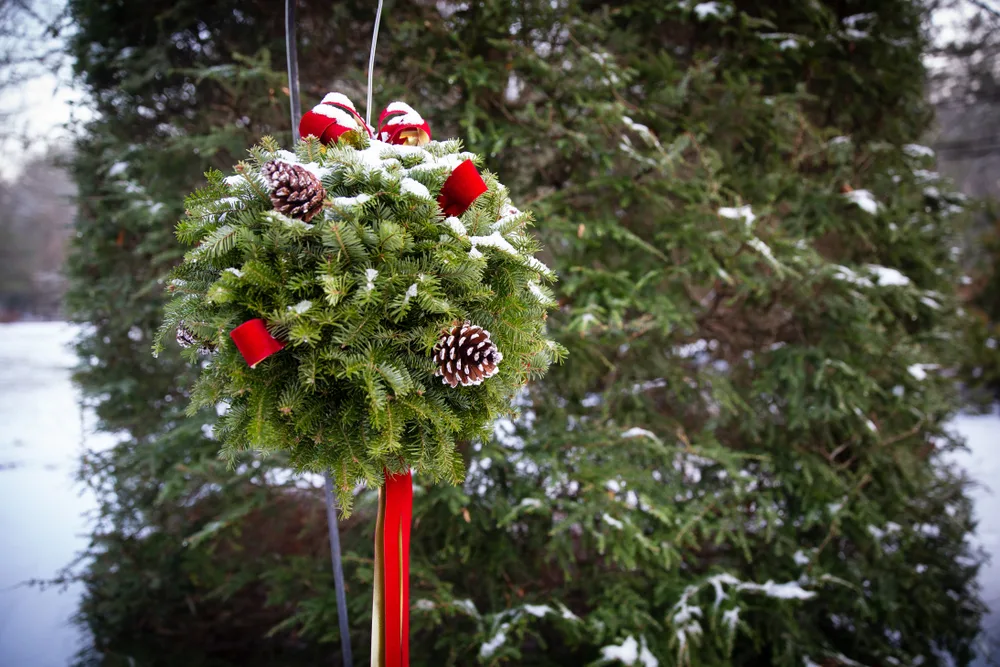
If you have access to plenty of branches, make some evergreen garland to hang in your home or even outside along the porch or a fence. The smell alone is worth the time it takes to make one.
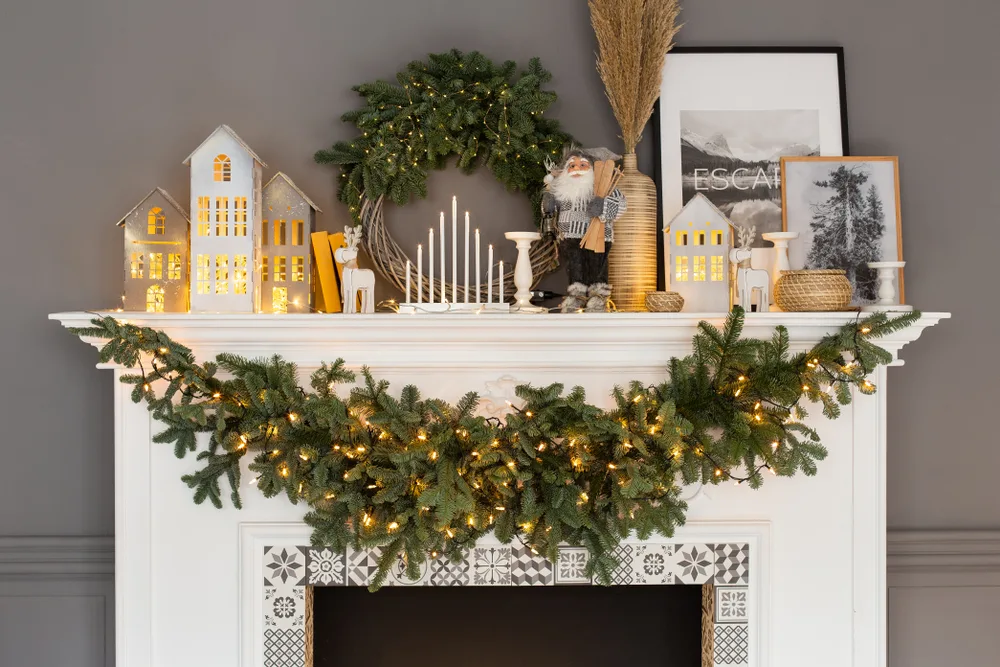
Of course, there’s always the tried and true evergreen wreath. This classic holiday staple is easily made with only a few branches of your favorite evergreens.
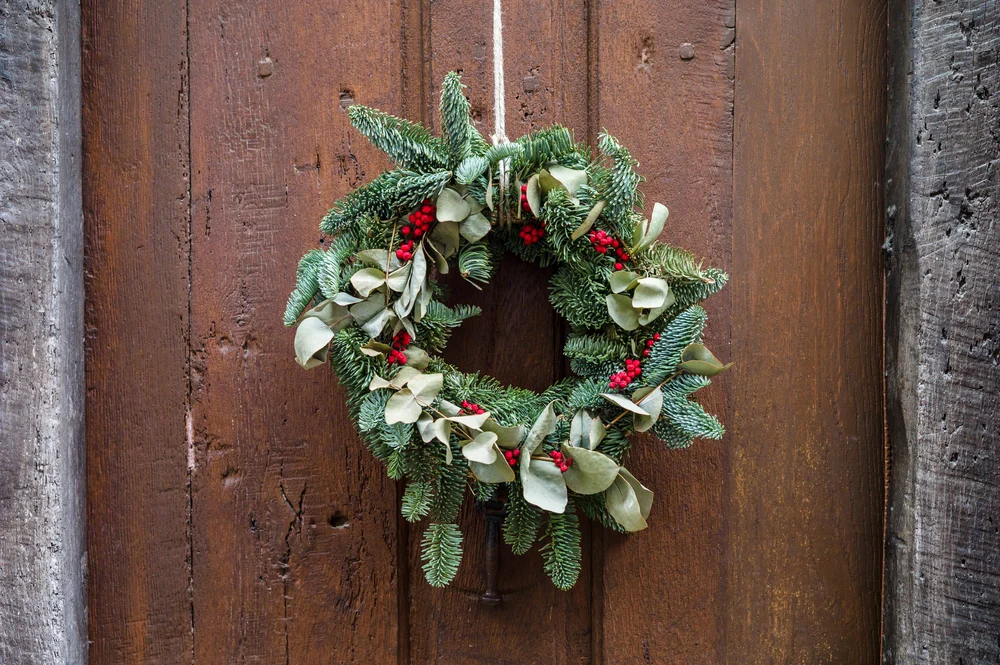
2. Holly
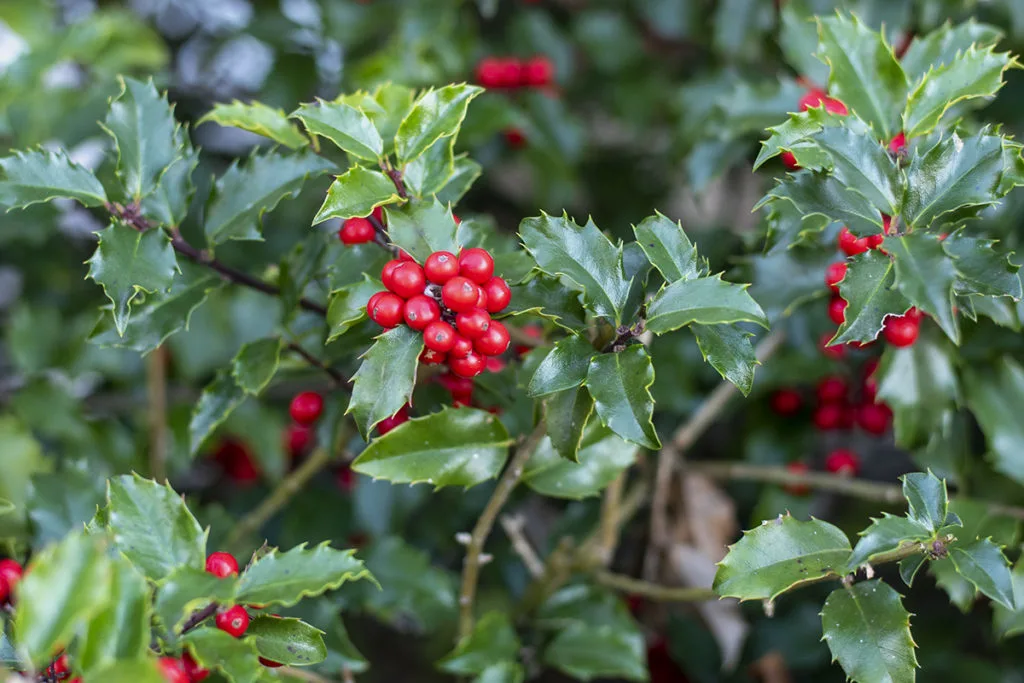
Holly is yet another plant that immediately calls to mind the Christmas season. Even in the middle of summer, when you see the beautiful dark green leaves and bright red berries, it’s hard not to think, “Christmas.”
Bring this beautiful evergreen into your home for the holidays in much the same way you would any other evergreen. You can use branches of holly or sprigs of holly in all of your decorating and Christmas crafts.
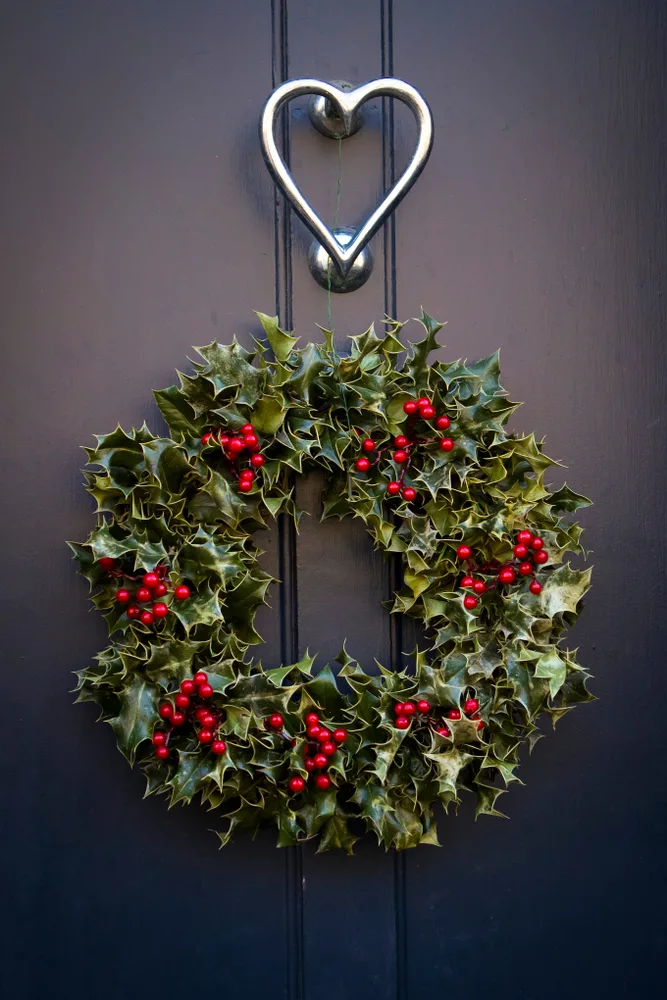
If you don’t have access to holly, may I suggest planting a bush in your yard somewhere? Holly can be grown nearly anywhere, and you can keep it trimmed into well-behaved shrubs or grow a holly tree as tall as your house. Of course, the latter could take some time.
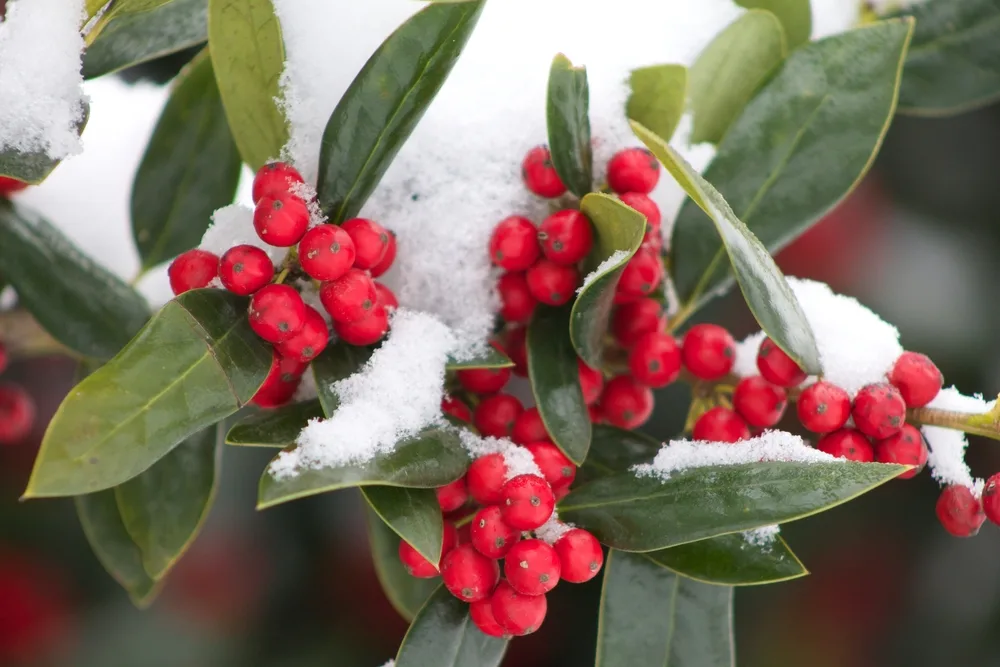
3. Mistletoe
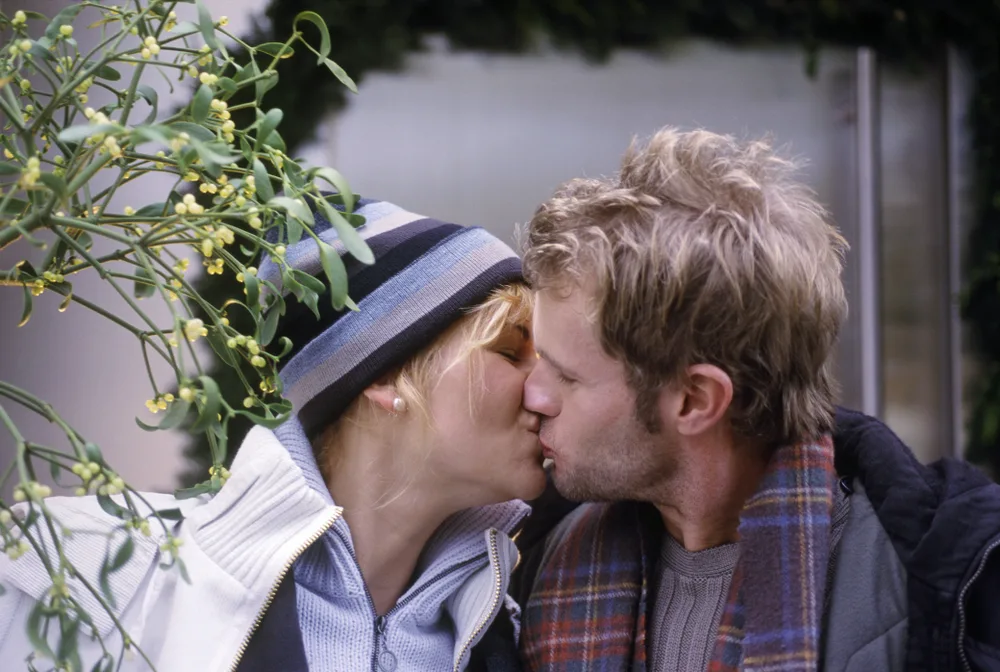
Oh mistletoe, this beautiful little plant has such an interesting history. You can read about its ties to Christmas and other traditional Christmas plants and their stories here.
Whether you love hanging about the mistletoe or loath it, you can’t deny the long history of mistletoe’s Christmas connection. If you’re in the kissing camp, decorating with mistletoe is a must.
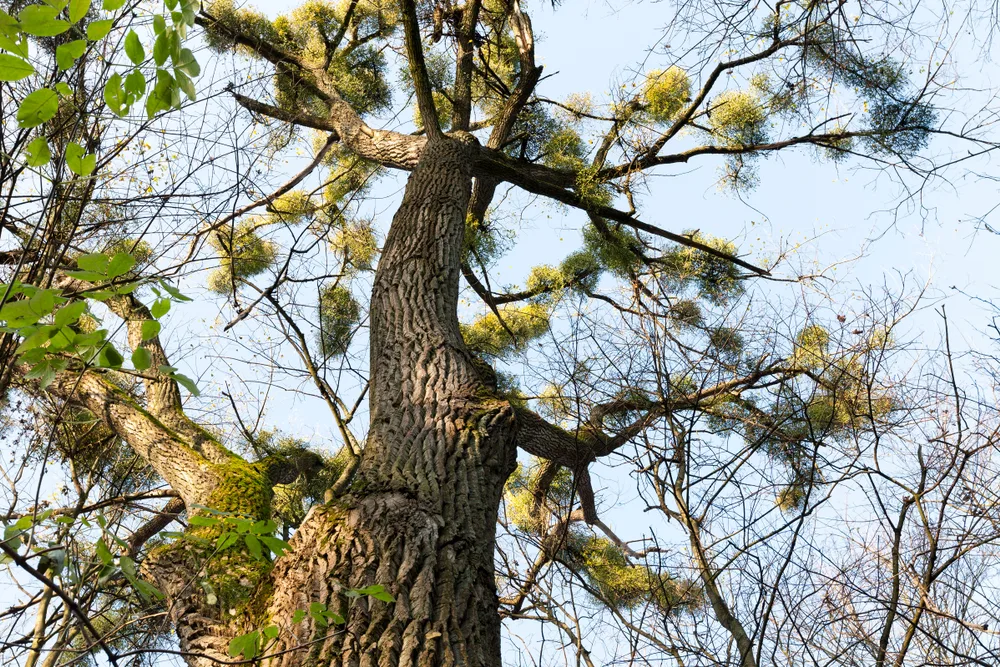
Did you know that mistletoe is a parasitic plant? Yup, it grows in large clusters in healthy trees and taps into the tree itself, feeding off of the tree’s nutrients. You can find traditional mistletoe growing from trees nearly anywhere in the eastern United States and Canada. However, in the western states and up into southern Canada, you’ll find the dwarf version of the mistletoe we all know and loath. I mean love.
If you’ve got your heart set on real mistletoe, but it’s nowhere to be found where you live, may I suggest purchasing some from a winter farmer’s market or an Etsy seller. Don’t forget to add a few sprigs to your evergreen kissing balls.
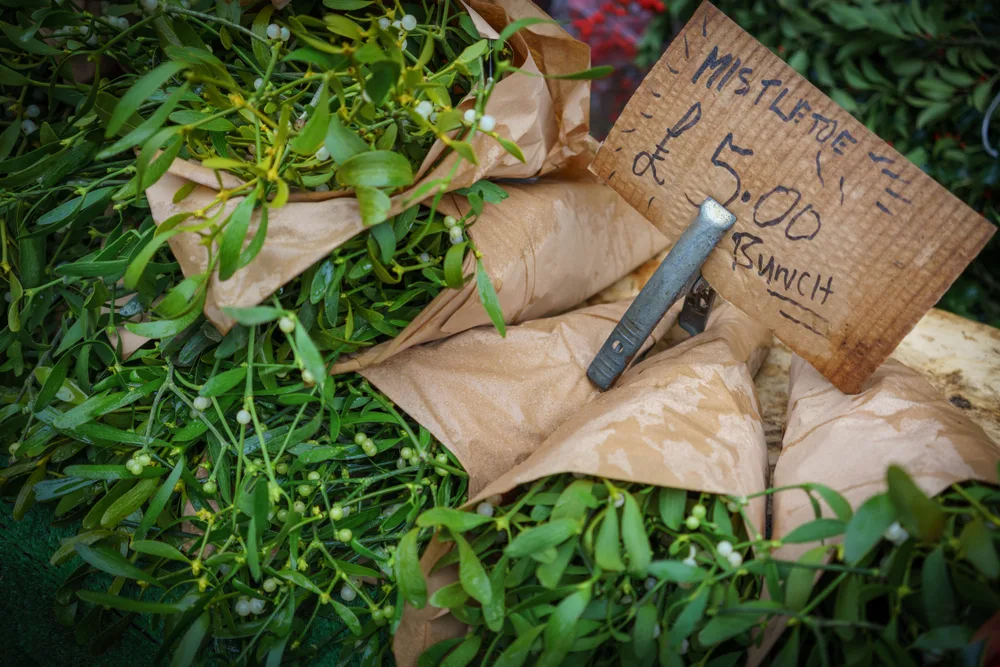
Maybe this year, place your mistletoe someplace unexpected, like in the car or hanging in the pantry door.
4. Eastern red cedar or Juniper
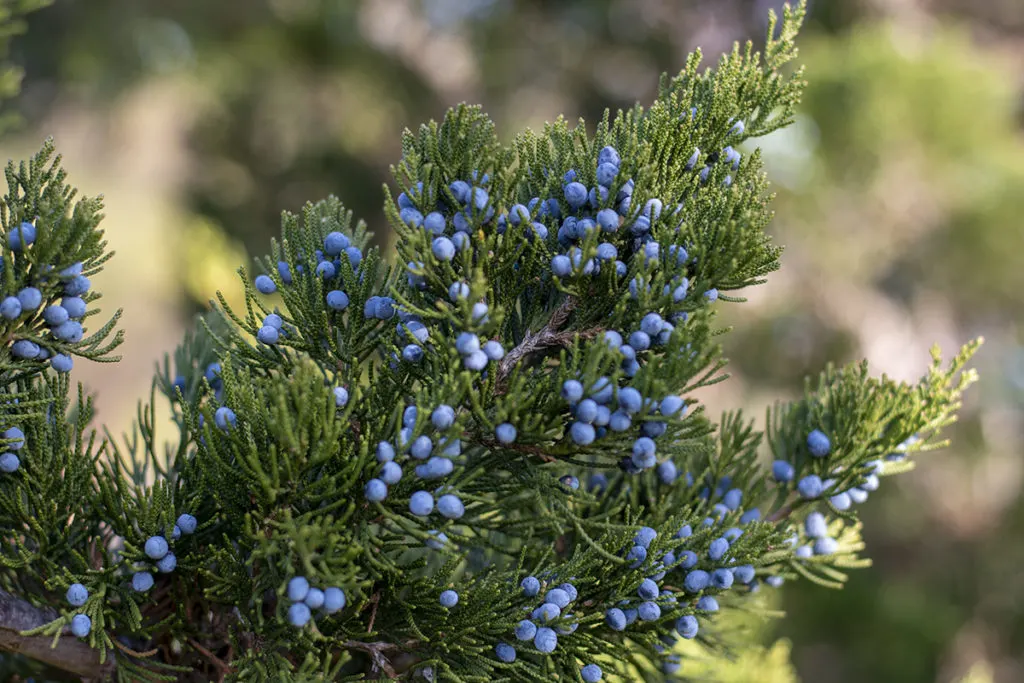
There’s so much more to Christmas than red and green. This festive season demands all the colors of the wild outdoors be enjoyed. And to that end, I’d like to bring your attention to the eastern red cedar. This native to the states bursts forth in the loveliest junipers every 2-3 years once it reaches cone-bearing age.
As I was driving down the highway the other day, I couldn’t help but notice cedar tree after cedar tree weighed down in a shroud of blue and green. Tiny little blue-gray berries covered the branches.
Naturally, you can decorate with all junipers, as they produce such lovely berries. I just chose the eastern red cedar as it’s what grows near me.
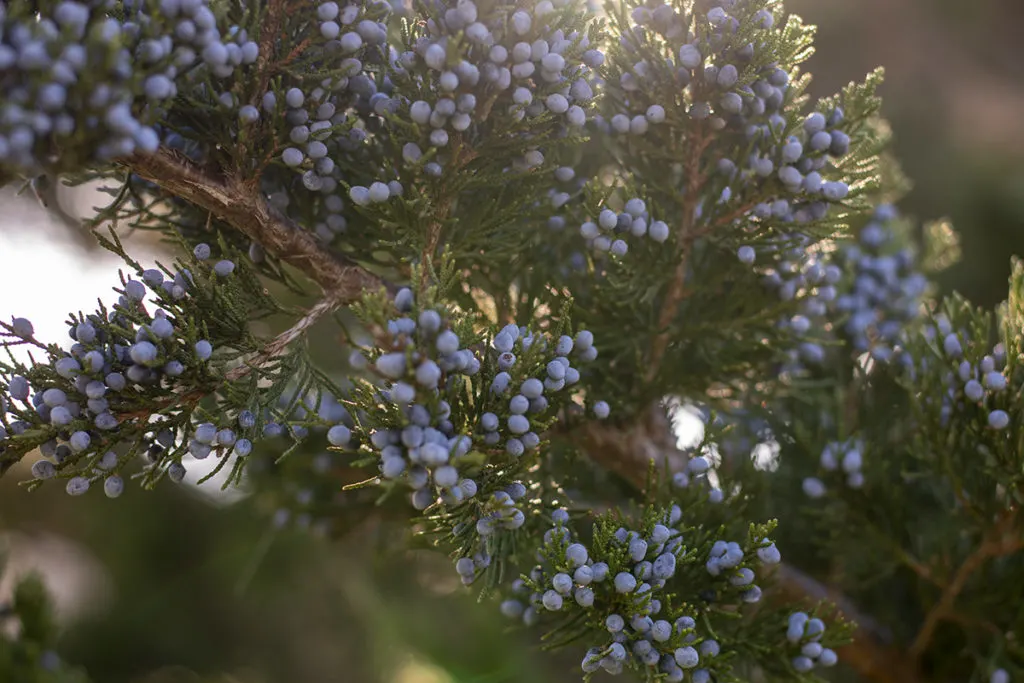
Branches studded with juniper berries make a beautiful addition to your Christmas wreath. And eastern red cedar (which is actually a juniper, Juniperus virginiana) berries are edible. I wouldn’t go popping them off the tree and into my mouth; they certainly aren’t that kind of edible.
But you can use them as you would any edible juniper – to season meat and broth. And, of course, to make gin. Give this easy homemade infused gin recipe a try from Colleen at Grow Cook Forage Ferment. You’ll have the perfect winter spirit for Christmas cocktails.
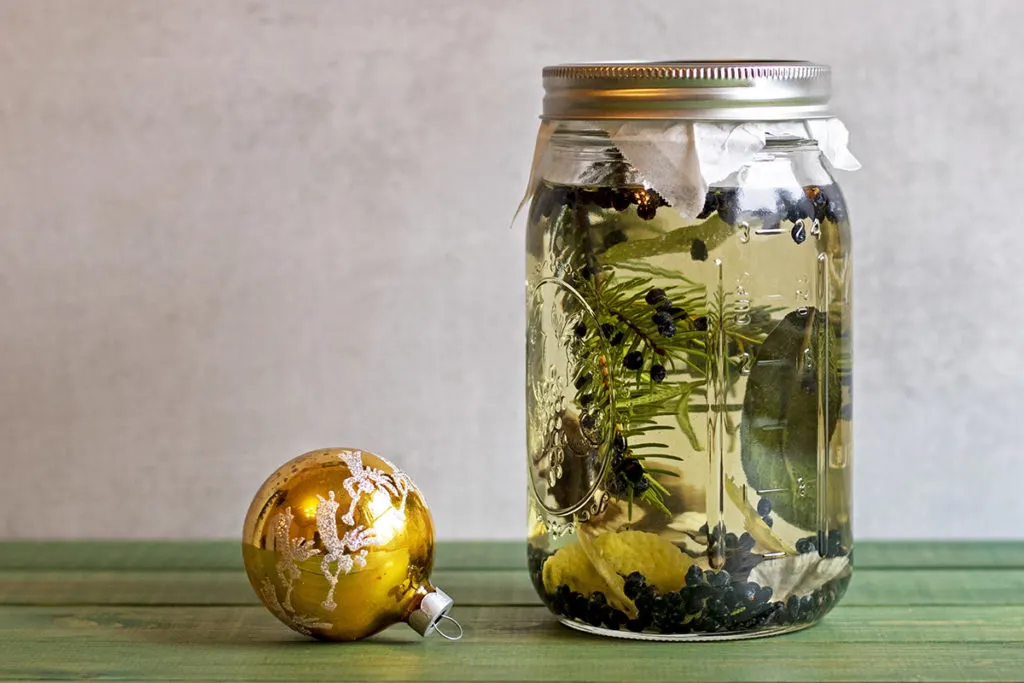
(As with any foraging for wild edibles, it’s on you to properly identify your plants, this information is provided for educational purposes only. Not all juniper berries are edible, do your due diligence.)
5. Winterberry
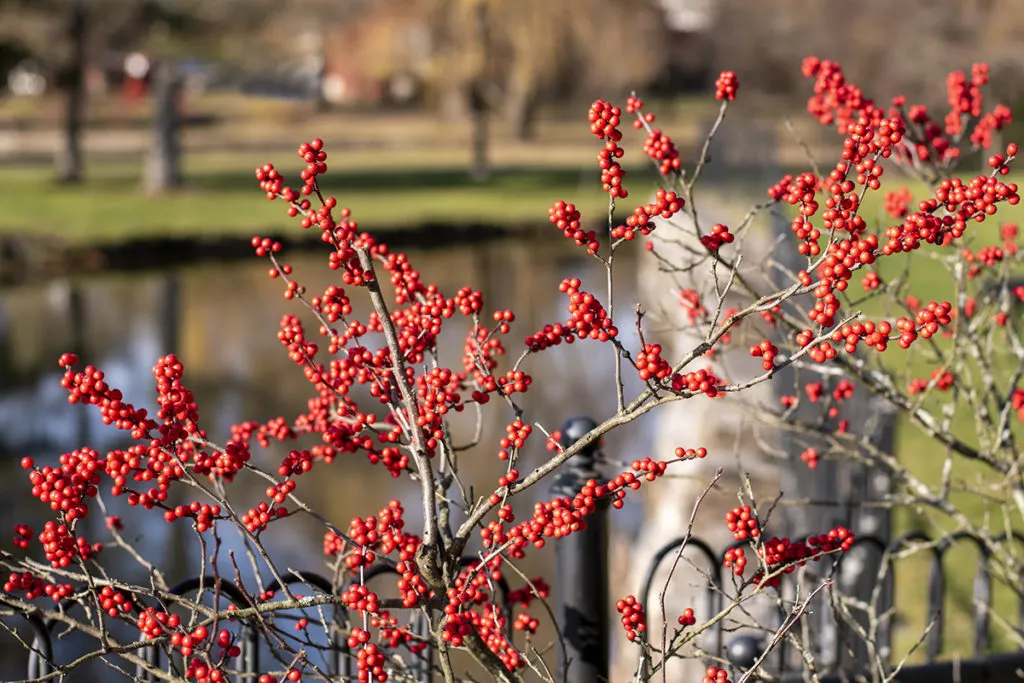
There is something almost magical about walking in a snowy field and spying these bright, red berries. Winterberry just begs to be brought indoors. The bright red berries on dark branches look wonderful against white walls or in minimalist settings.
Winterberry is a type of holly, but it loses its leaves in the winter, allowing the showy red berries to take center stage. The berries hang on to those branches pretty good, too, making them an ideal indoor decoration that will last through the season.
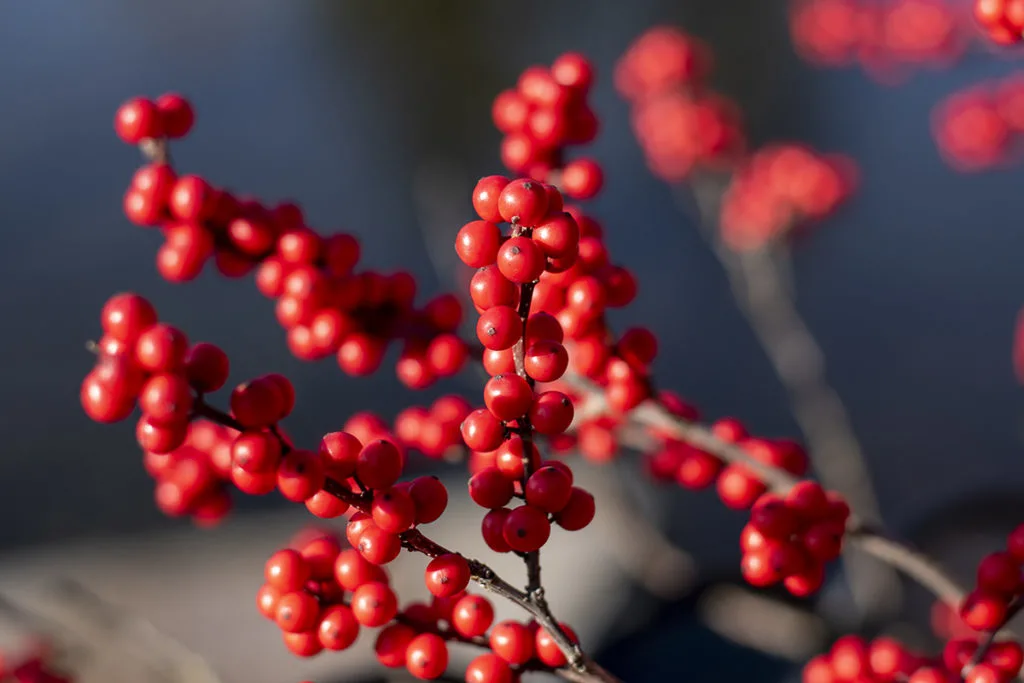
Whenever I decorate with winterberry, I keep it throughout the winter, long after the Christmas decorations have been put away. The cheery red berries make me smile whenever I pass them.
Along with being the perfect addition to a wreath, winterberry branches look beautiful tucked into your Christmas tree.
Winterberry tends to grow in marshy, open fields. Keep an eye out for it before the snow falls and come back to it when it’s time to decorate. Of course, you can always choose to plant it in your garden or yard as well. It’s a great landscaping option.
6. Rose Hips
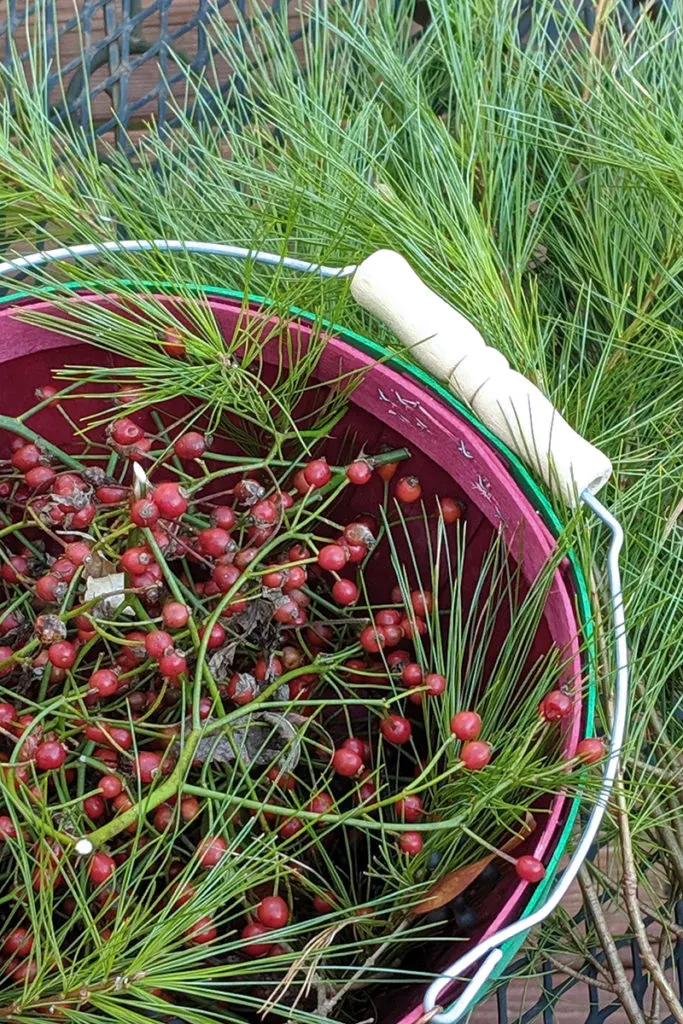
Most folks don’t think of Christmas when they think of rose hips, but they should. These lovely red-orange berries make a wonderful addition to any Christmas centerpiece, mantlepiece, or wreath. And if you’ve got roses growing in your garden, they’re easy enough to come by.
I prefer the tiny sprays of rose hips that can be found on the invasive multiflora rose. These plants are not native to the states and often crowd out native plant life. So, picking the rose hips and using them in my house is my way of helping to control them.
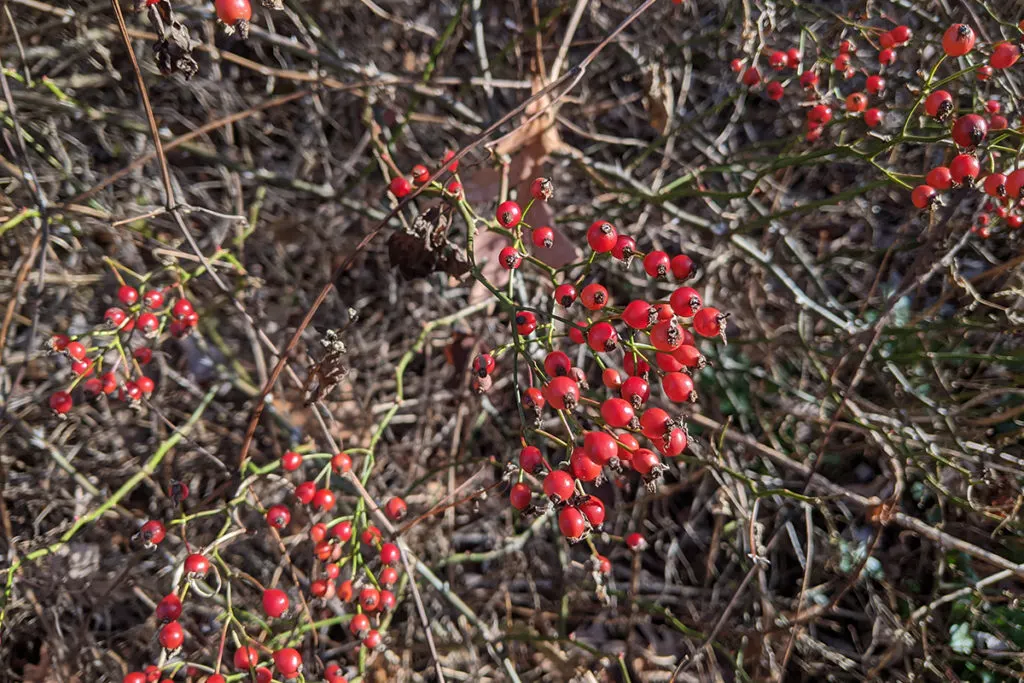
Plus, their tiny size and the way they grow in bunches naturally lends them to use in decorating.
No matter what type of roses you have access to, I hope you’ll add some festive rose hips to your holiday decorations this year.
7. Oriental Bittersweet
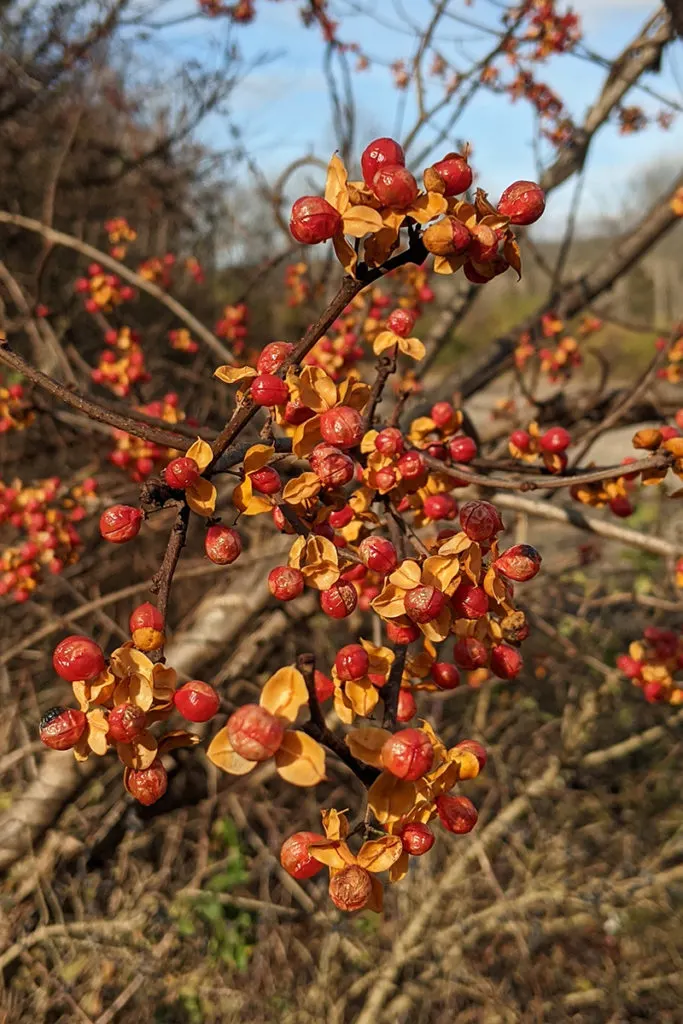
Another beautiful plant you can find easily is Oriental bittersweet. This common vine is easily spotted in the fall once the leaves have fallen from the trees. Its bright orange-red clusters of berries make it easy to find.
Again, Oriental Bittersweet is an invasive species that is a real problem here in the states. Harvesting it for decoration is a good way to keep those berries out of the soil. Just be sure to properly dispose of it at the end of the season by burning it.
There is also an American Bittersweet, which many invasive plants threaten, including the Oriental Bittersweet. But they’re easy to tell apart.
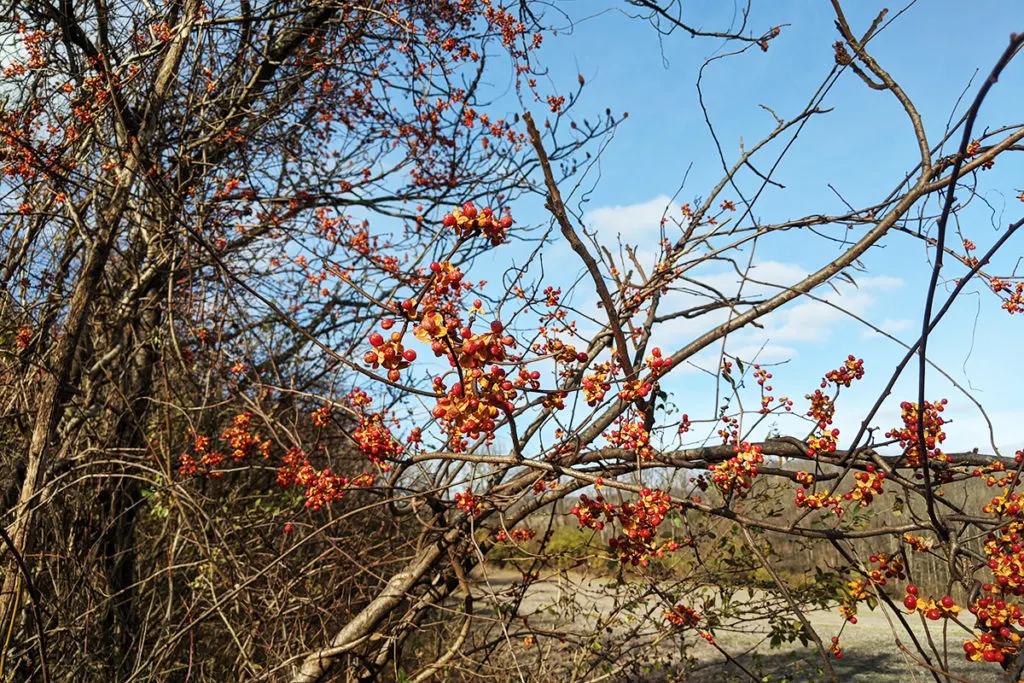
The invasive plant has berries that grow all along a smooth vine, whereas the native American bittersweet has berries only at the tips of its vines and blunt thorns along the vines.
If you’re going to use bittersweet, be sure to pick only the invasive oriental species.
Because it’s a vine, you can make wreaths from it, much like you would from woody grapevines. Bittersweet is another plant that’s perfect for tucking into your Christmas tree here and there.
8. Grapevines
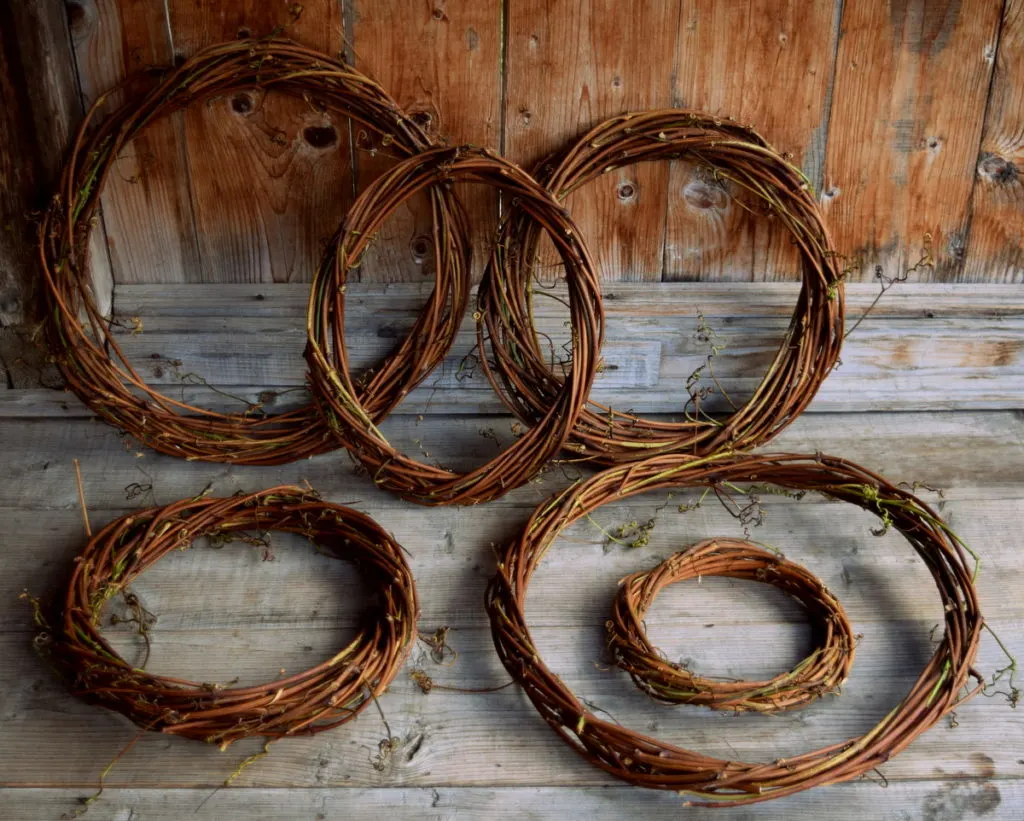
While grapevines aren’t particularly showy on their own, and you may not think of them as an obvious Christmas plant, they make the perfect base for adornment. And you can find them nearly anywhere.
Our own Cheryl wrote a whole post on how to make grapevine wreaths. She walks you through the entire process and tells you what tools you’ll need.
Check it out and get started today. You’ll have plenty of wreaths ready to decorate. You could even give wreaths as gifts to friends and neighbors if you’ve got access to especially unruly grapevines.
Or use the vines to give structure and shape to evergreen garlands or fashion star-shaped ornaments out of them. Grapevines are a versatile plant that can be used in so many different ways to decorate for Christmas.
9. Pine Cones
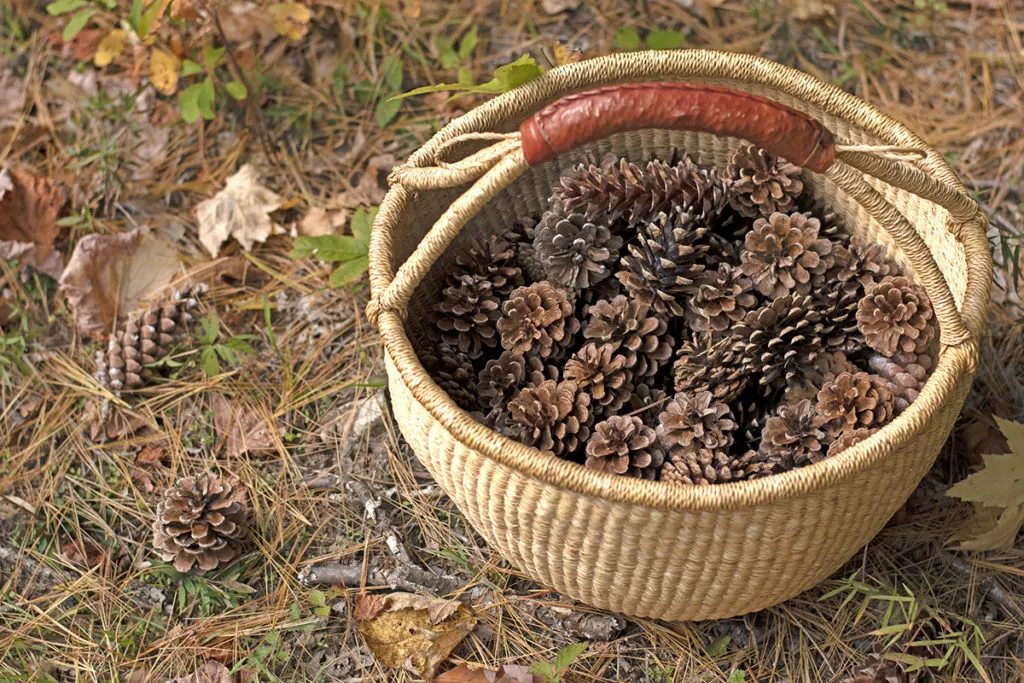
Pine trees and pine cones go hand in hand. And I can’t think of a better free and natural crafting resource than the pine cones that litter the ground underneath pine trees. Grab a basket and gather as many pine cones as you can.
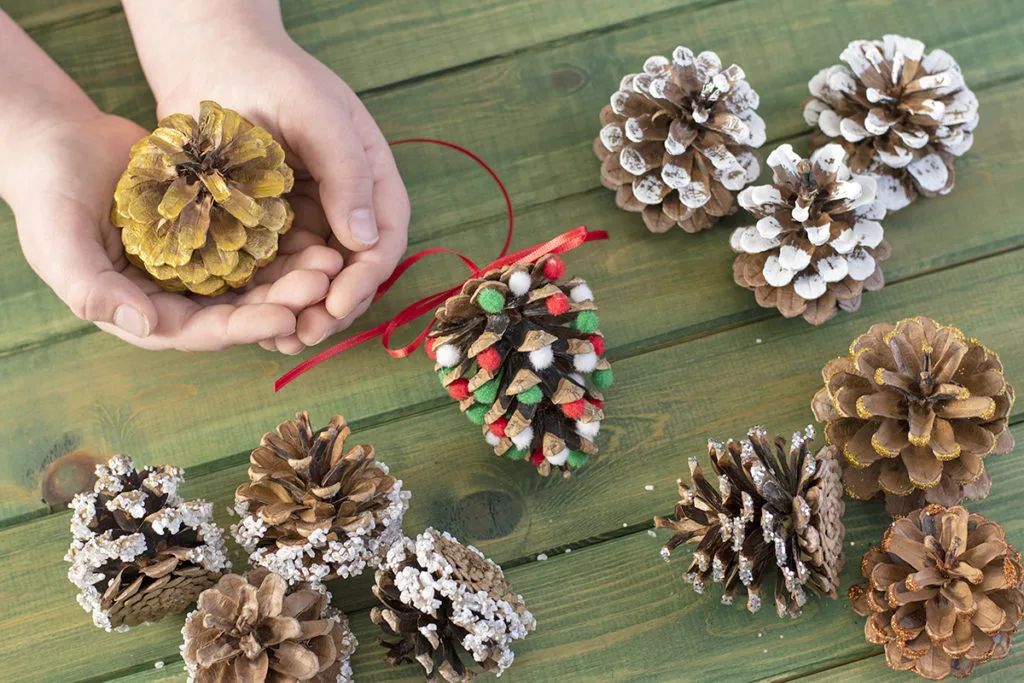
Then come back here and check out my post about using pine cones for Christmas decorations.
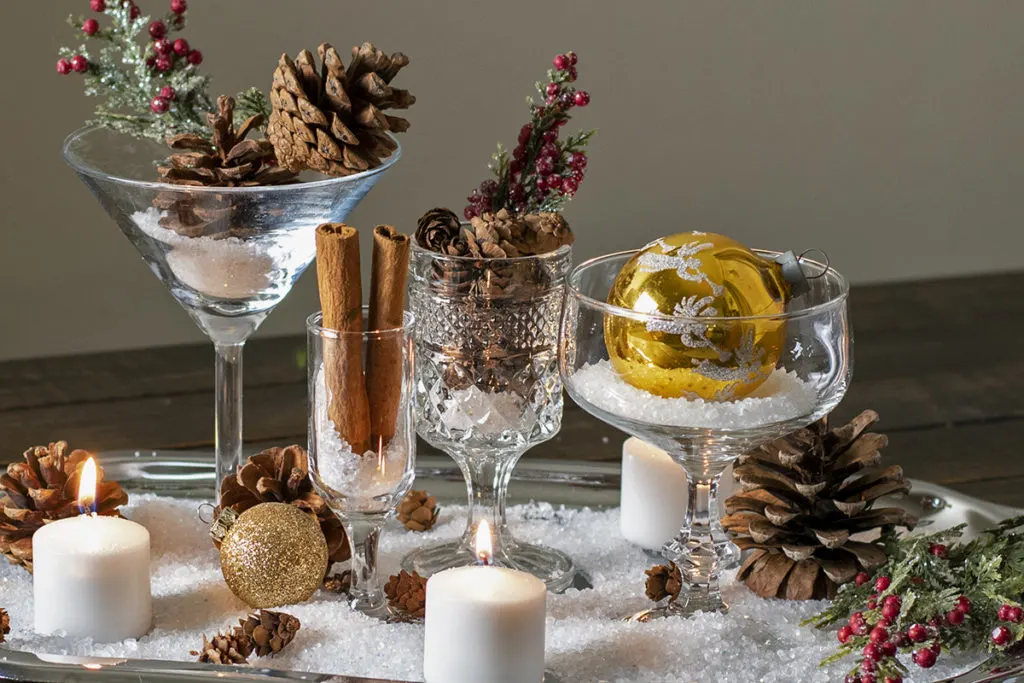
You’ll have enough ideas to use every pine cone in your basket.
Perhaps you have a favorite outdoor Christmas plant that grows nearby and comes into your home for the holidays? Decorating with what grows close to home is meaningful and adds experience and memories along with the act of decking the halls.
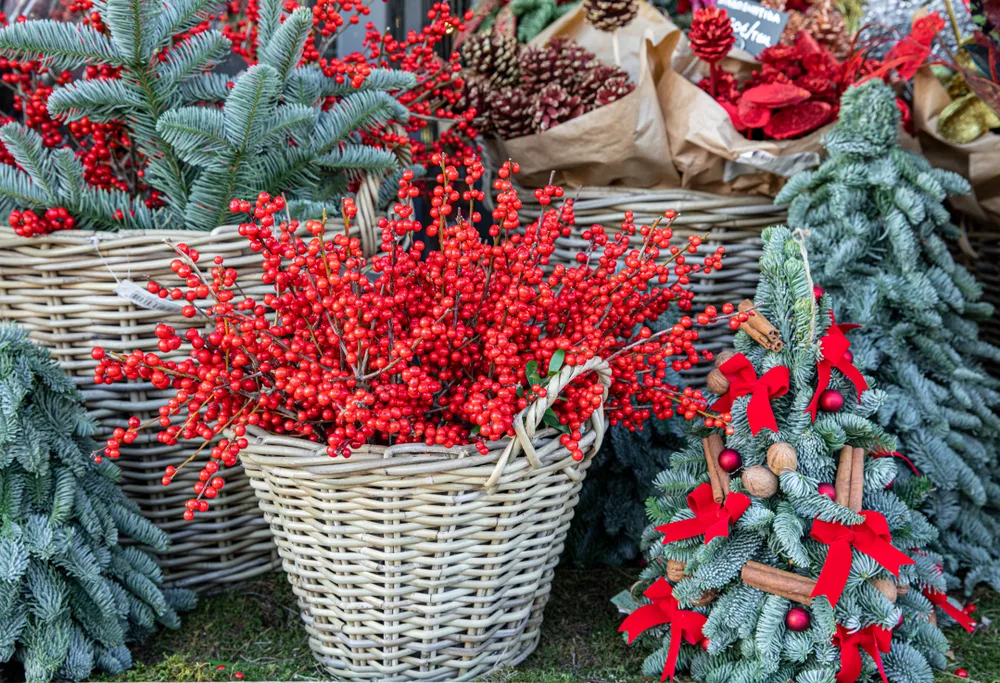
As you fill your homes with Christmas cheer and prepare for the holidays this year, it’s my wish that you find peace, rest, and health in this coming season.
Please remember if you are foraging on land that’s not your own, be courteous, and practice good foraging manners. Make sure you have permission to forage there and only take what you need. Leave plenty of the main plant behind to ensure its continued health and growth. Many animals rely on berries in the winter months; be mindful of what you are taking and how much.
Read Next:
Pin This For Later
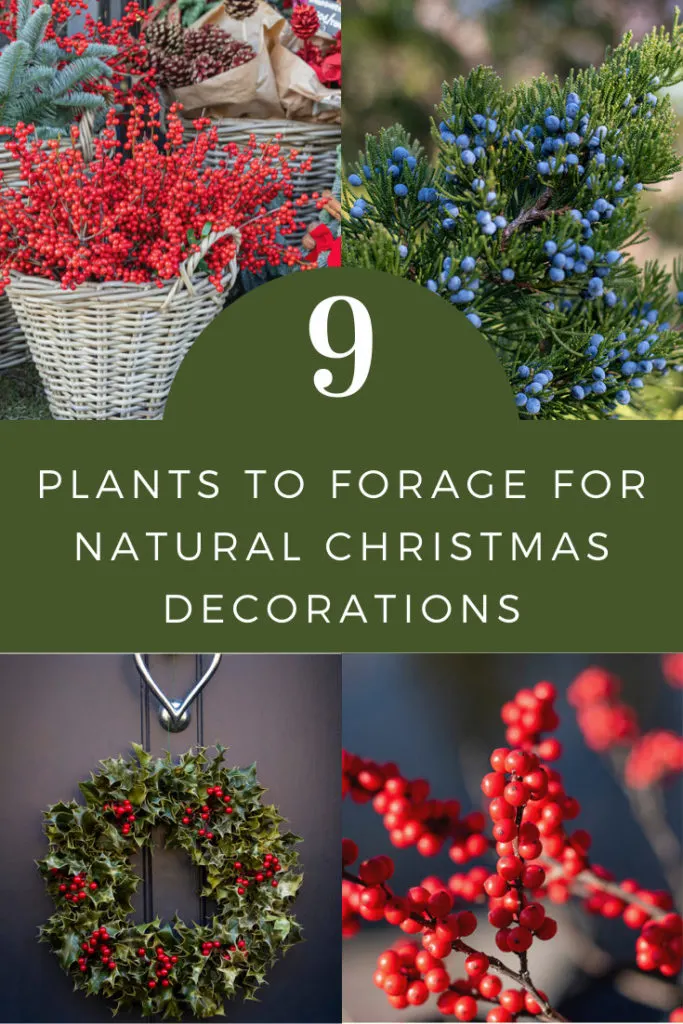

Get the famous Rural Sprout newsletter delivered to your inbox.
Including Sunday ramblings from our editor, Tracey, as well as “What’s Up Wednesday” our roundup of what’s in season and new article updates and alerts.


